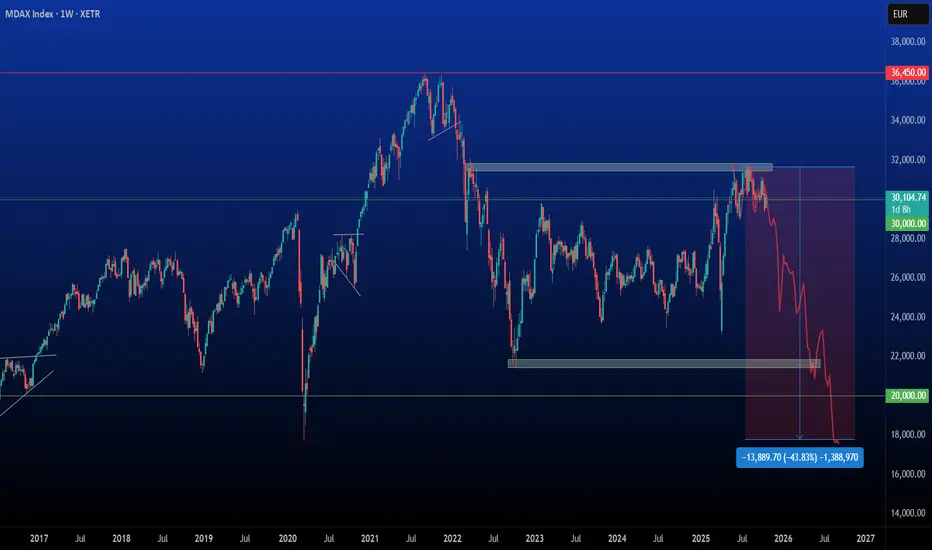As we approach the end of 2025, it has become increasingly clear that the German economy is flirting with a mild — and possibly deeper — recession. Recent data confirm the slowdown: Germany’s Manufacturing PMI remains stuck around 47.2, signaling continued contraction in industrial activity, while exports and industrial orders have yet to recover from the post-pandemic plateau.
Mid-cap German companies, which dominate the MDAX, are particularly exposed to these headwinds. Their earnings are under pressure from weak global demand, persistently high energy costs over the past three years, and renewed trade-policy uncertainty under the Trump administration. Should the U.S. impose higher tariff rates on European goods — similar to those previously applied to China — Germany’s export-oriented industrial base could see further margin compression.
Meanwhile, China’s strategy of redirecting exports from the U.S. toward the EU and other markets may create deflationary pressures in Europe as import prices fall and domestic producers are forced to adjust. Combined, these forces could weigh heavily on profit expectations and sentiment toward German mid-caps through 2026.
Technically, the MDAX appears to be encountering strong resistance at current levels and may remain range-bound toward the lower end of its 2025-2026 trading band. My medium-term target is a retest of the 2020 COVID-era lows. If Germany’s recession fears materialize more forcefully, the downside potential could extend even further.
Mid-cap German companies, which dominate the MDAX, are particularly exposed to these headwinds. Their earnings are under pressure from weak global demand, persistently high energy costs over the past three years, and renewed trade-policy uncertainty under the Trump administration. Should the U.S. impose higher tariff rates on European goods — similar to those previously applied to China — Germany’s export-oriented industrial base could see further margin compression.
Meanwhile, China’s strategy of redirecting exports from the U.S. toward the EU and other markets may create deflationary pressures in Europe as import prices fall and domestic producers are forced to adjust. Combined, these forces could weigh heavily on profit expectations and sentiment toward German mid-caps through 2026.
Technically, the MDAX appears to be encountering strong resistance at current levels and may remain range-bound toward the lower end of its 2025-2026 trading band. My medium-term target is a retest of the 2020 COVID-era lows. If Germany’s recession fears materialize more forcefully, the downside potential could extend even further.
כתב ויתור
המידע והפרסומים אינם אמורים להיות, ואינם מהווים, עצות פיננסיות, השקעות, מסחר או סוגים אחרים של עצות או המלצות שסופקו או מאושרים על ידי TradingView. קרא עוד בתנאים וההגבלות.
כתב ויתור
המידע והפרסומים אינם אמורים להיות, ואינם מהווים, עצות פיננסיות, השקעות, מסחר או סוגים אחרים של עצות או המלצות שסופקו או מאושרים על ידי TradingView. קרא עוד בתנאים וההגבלות.
